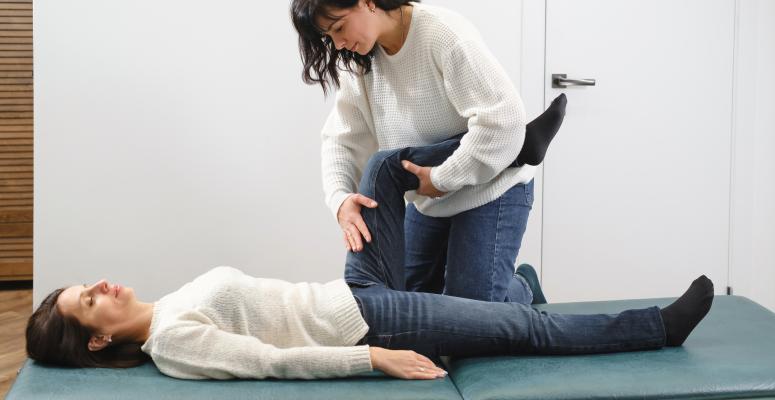
Physical therapy clinics offer techniques and methods that go beyond exercises and stretches. They can offer treatments and programs like surgical rehab, at-home care and ergonomics. But one of the most common treatments used by physical therapists is manual therapy, which allows them to use their hands to help with pain management.
This type of therapy is not one-size-fits-all; each technique appeals to a different cause of pain and the severity of the condition that’s causing it.
Read on to learn about four common hands-on physical therapy techniques, and how they can help alleviate pain throughout your body.
What is hands-on physical therapy?
Hands-on physical therapy, or manual therapy, is a subset of physical therapy that involves a therapist using hands-on techniques to help with managing pain from a variety of injuries and conditions. They use their hands to manipulate the joints and muscles to decrease inflammation and improve range of motion.
Hands-on physical therapy often requires massagelike movements to apply pressure to the pain areas. Many of the techniques focus on relieving tension by finding the scar tissue that’s causing the pain and restricted movement.
4 different types of hands-on techniques: What’s the difference?
Manual therapy is an umbrella term that covers several techniques. But how do you know which method is best for you?
The physical therapist will determine which hands-on physical therapy methods will benefit you the most, depending on the severity and cause of the pain as well as the area that’s causing the issue. For instance, the muscle tension that’s causing lower back pain can’t be treated in the same way as the tension surrounding the joint causing shoulder or knee pain.
Your therapist will assess your symptoms to determine what the cause may be, usually by asking you to demonstrate the movements that are causing you pain or showcase the limits to your range of motion. From there, they will create a treatment plan specifically for you, which will often include one or more of the manual therapy methods listed below.
1. Soft tissue mobilization
Soft tissue mobilization refers to the therapist using their hands in massagelike movements to manipulate the painful area. The benefits of this technique include:
- Breaking up scar tissue.
- Relieving muscle tension.
- Releasing fluids that are trapped in the tissue that can cause inflammation.
2. Joint mobilization
Joint mobilization involves moving the joint around to find the restriction that’s causing a reduced range of motion. The benefits include:
- Loosening up soft tissue.
- Increasing joint mobility.
- Improving overall joint function.
3. Strain counterstrain
Strain counterstrain refers to the physical therapist moving your body into positions to compress the muscle that’s causing you pain and reducing the tension of the muscle that’s in spasm. It has quite a few benefits, including:
- Positioning the body in a comfortable way that works with the muscle, not against it.
- Restoring joint function.
- Helping to alleviate pain.
4. Myofascial release
Myofascial release allows the therapist to focus on pain stemming from the fascia, which is the tissue that covers your muscles and bones. They feel around for tight spots in the fascia before maneuvering them to restore their mobility. The benefits of this manual therapy technique include:
- Improving tissue recovery.
- Increasing blood circulation.
- Improving range of motion in joints.
Conditions that hands-on physical therapy can treat
There is a long list of injuries and medical conditions that can be treated with hands-on physical therapy, as it can assist with most causes of pain stemming from muscle, tendon and ligament issues.
Manual therapy can help:
Alliance PTP is ready to help you find top-notch hands-on physical therapy
Hands-on physical therapy is made up of some of the most commonly used techniques in physical therapy. If you’re experiencing pain, swelling or a reduced range of motion, consider hands-on physical therapy.
At Alliance Physical Therapy Partners, we’re proudly bringing together physical therapy practices across the country to help people get the high-quality PT they need.
Want to see a physical therapist in person? We can put you in touch with an Alliance PTP partner that’s close to you and that can help you address pain that can be treated with manual therapy.
Not keen on in-person PT sessions or not close to an Alliance PTP partner? No worries. We also offer effective and affordable virtual physical therapy through our Agile Virtual Physical Therapy platform.
Come find help for your injury or chronic condition today!
Get Help at a Location Near You
